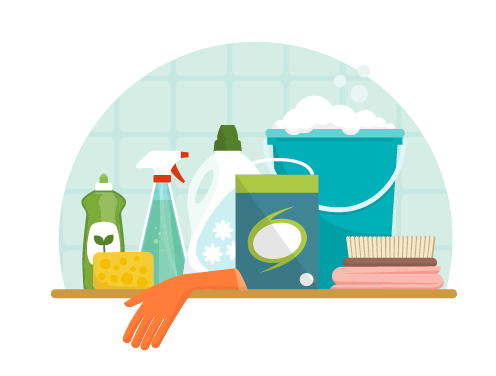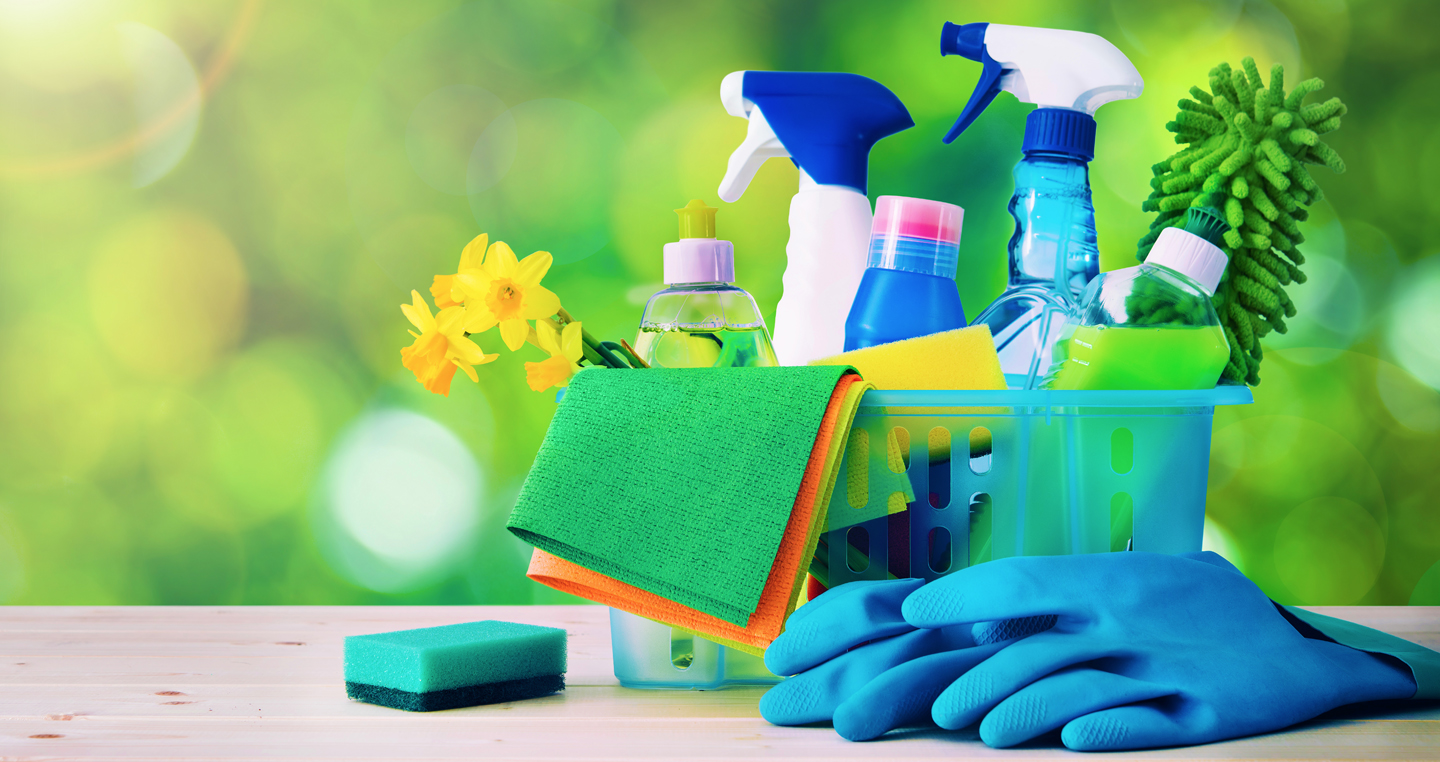Detailed Everyday Cleaning Tips: From Defrosted and Cleaned Every Few Months to Removing Clutter
Detailed Everyday Cleaning Tips: From Defrosted and Cleaned Every Few Months to Removing Clutter
Blog Article
Understanding the Need for Extensively Decontaminating and Disinfecting Regularly Touched Surfaces in High-Traffic Areas
In the world of public wellness and safety, the careful disinfection and sanitization of regularly touched surface areas in high-traffic areas stand as vital actions in stopping the spread of harmful pathogens. By discovering the various aspects of surface disinfection, from the threats associated with disregarding cleansing methods to the reliable techniques that can be used, a clearer understanding arises of the vital function these practices play in securing public wellness.
Importance of Surface Area Sanitation
Highlighting the thorough sanitation of high-traffic surfaces is critical in preserving a hygienic environment and protecting against the spread of damaging virus. High-touch surface areas such as door takes care of, light switches, lift buttons, and countertops function as breeding premises for germs and infections. Normal sanitation of these surface areas is important to minimize the threat of contamination and transmission of diseases.
By implementing a robust disinfection protocol, services and establishments can create a more secure environment for site visitors, staff members, and customers. Proper surface area sanitation not just minimizes the spread of contagious conditions yet likewise instills self-confidence in the sanitation and safety and security of the facilities. This proactive strategy demonstrates a commitment to health and wellness and health, which is specifically important in high-traffic areas where the possibility of exposure to pathogens is heightened.
Moreover, surface sanitation plays an essential role in total infection control approaches. Integrated with hand hygiene practices, wearing masks, and keeping physical distancing, comprehensive disinfection of high-touch surfaces develops an extensive protection against the transmission of hazardous bacteria. Prioritizing surface sanitation is an essential component of a holistic technique to health and wellness in shared spaces.
Risks of Neglecting Cleansing Practices
Neglecting detailed sanitation of high-traffic surfaces dramatically increases the danger of bacterial and viral contamination, posturing a significant danger to the wellness and security of people frequenting these spaces. Failing to implement correct cleansing techniques can bring about the build-up and spread of dangerous virus, consisting of infections and bacteria, on regularly touched surface areas such as doorknobs, hand rails, elevator buttons, and countertops.

Moreover, neglecting the importance of comprehensive cleaning not just endangers the health of individuals but likewise weakens efforts to preserve a sanitary and tidy environment. It is important to identify the significance of correct disinfection protocols in avoiding the spread of infections and safeguarding public health.
Reliable Sanitation Methods
To keep ideal tidiness and minimize the risk of contamination on high-traffic surface areas, using efficient disinfection methods is vital. Among one of the most reliable and usual disinfection methods is using chemical anti-bacterials. These items can vary in strength and make-up, with some targeting specific pathogens like bacteria or infections. It is crucial to comply with the maker's guidelines for appropriate dilution, call time, and air flow when utilizing chemical disinfectants to ensure their efficiency - Everyday cleaning.
Another effective technique is using UV-C light. UV-C light has been shown to be effective in killing a broad array of microbes by disrupting their DNA structure, thus preventing them from duplicating. It is vital to utilize UV-C light properly, ensuring that the correct intensity and direct exposure time are used to attain the preferred disinfection results.
Additionally, using heavy steam cleaning as a sanitation technique can be very efficient, specifically on surfaces that are heat-resistant. Steam can penetrate porous surfaces and eliminate microorganisms, infections, and various other virus properly. When utilizing steam cleaning, it is vital to make sure that the surface reaches the needed temperature level for a sufficient quantity of time to assure appropriate disinfection.
Effect On Public Health And Wellness
The maintenance of high criteria of tidiness and sanitation on high-traffic surfaces plays an essential function in guarding public wellness. Often touched surface areas in areas with high step, such as doorknobs, handrails, elevator buttons, and washroom centers, function as breeding grounds for dangerous pathogens. Failing to effectively decontaminate these surfaces can bring about the rapid spread of infectious illness within communities. By executing extensive disinfection methods, the risk of transmission of infections, germs, and various other germs can be substantially reduced.
In high-traffic locations like flight terminals, schools, medical facilities, and public transportation systems, the effect of strenuous sanitation actions can not be underrated. Prioritizing the sanitization of often touched surface areas is an aggressive approach to advertising public health and wellness and enhancing the safety of individuals in shared areas.
Carrying Out Normal Cleaning Up Procedures
Without delay setting up and sticking to a regular routine of cleaning methods is extremely important for maintaining the sanitation and security of high-traffic surfaces. Normal cleaning procedures are necessary in preventing Bonuses the accumulation of bacteria and pathogens on frequently touched surfaces, particularly in locations with high foot website traffic. By applying a methodical approach to cleansing, companies can properly minimize the threat of disease transmission and create a much healthier setting for staff members, clients, and the general public.
To develop a reliable cleaning timetable, it is important to recognize high-traffic areas that need constant interest. These locations might consist of doorknobs, handrails, elevator buttons, toilet centers, and shared devices. Executing a routine cleansing program that targets these surfaces numerous times a day can significantly decrease the spread of damaging microorganisms and infections.
Furthermore, using suitable cleansing representatives and anti-bacterials is essential to guaranteeing that surface areas are completely disinfected. Regular training of cleaning up personnel on correct cleaning techniques and the significance of adherence to the cleansing routine is additionally important in preserving a hygienic atmosphere. By prioritizing consistent cleaning procedures, organizations can promote the health and wellness and well-being of people who interact with these high-traffic surface areas.

Conclusion
In final thought, it is essential to prioritize complete disinfection and sanitization of frequently touched surface areas in high-traffic locations to stop the spread of Discover More unsafe pathogens and keep public health. It is crucial to identify the significance of maintaining clean surfaces in high-traffic areas to make certain the wellness of the community.
In the world of public wellness and safety and security, the thorough disinfection and sanitization of frequently touched surface areas in high-traffic locations stand as paramount procedures in stopping the spread of hazardous pathogens. By checking out the different facets of surface area sanitation, from the risks associated with overlooking cleaning protocols to the efficient methods that can be used, a clearer understanding emerges of the essential duty these methods play in securing public health.Furthermore, using heavy steam cleansing as a sanitation method can be highly efficient, especially on surface areas that are heat-resistant. When utilizing steam cleaning, it is vital to guarantee that the surface area reaches the required temperature for an enough quantity of time to ensure proper disinfection.
In conclusion, it is vital to focus on comprehensive my latest blog post disinfection and sanitization of often touched surfaces in high-traffic locations to prevent the spread of harmful virus and preserve public health.
Report this page